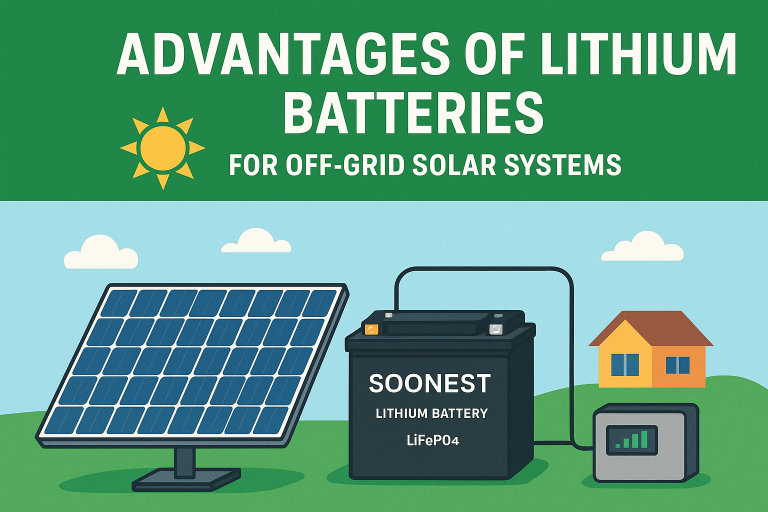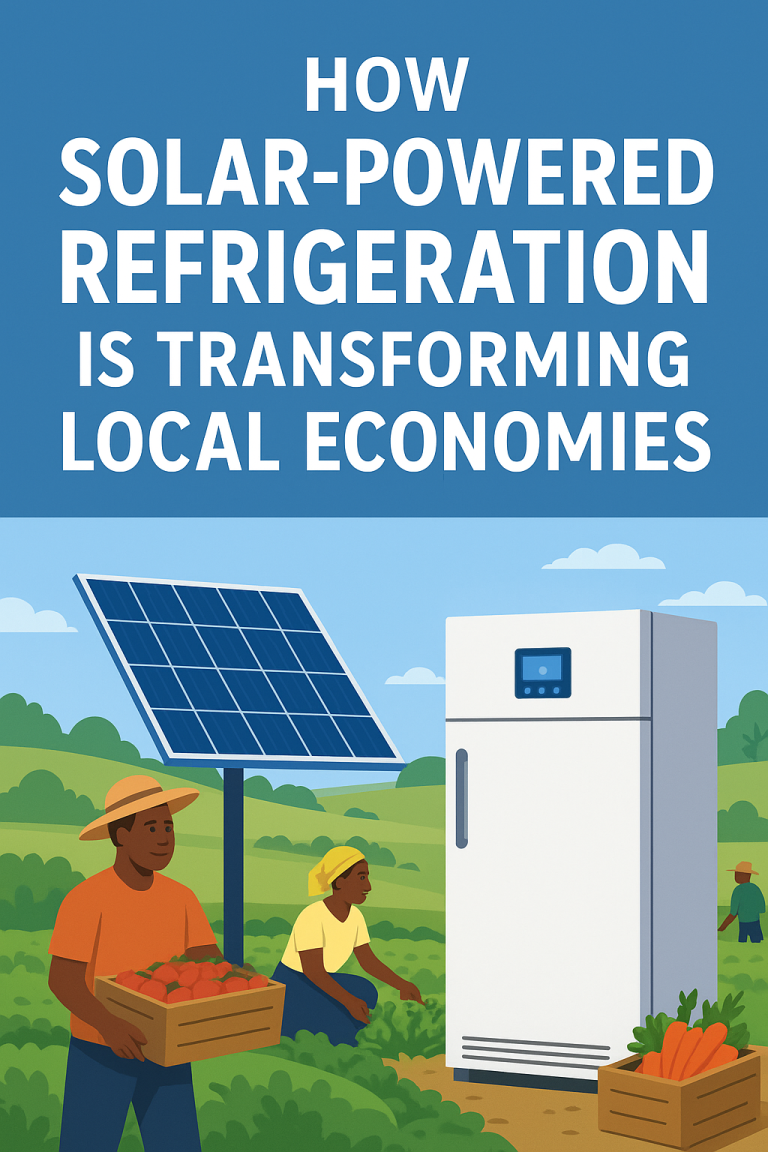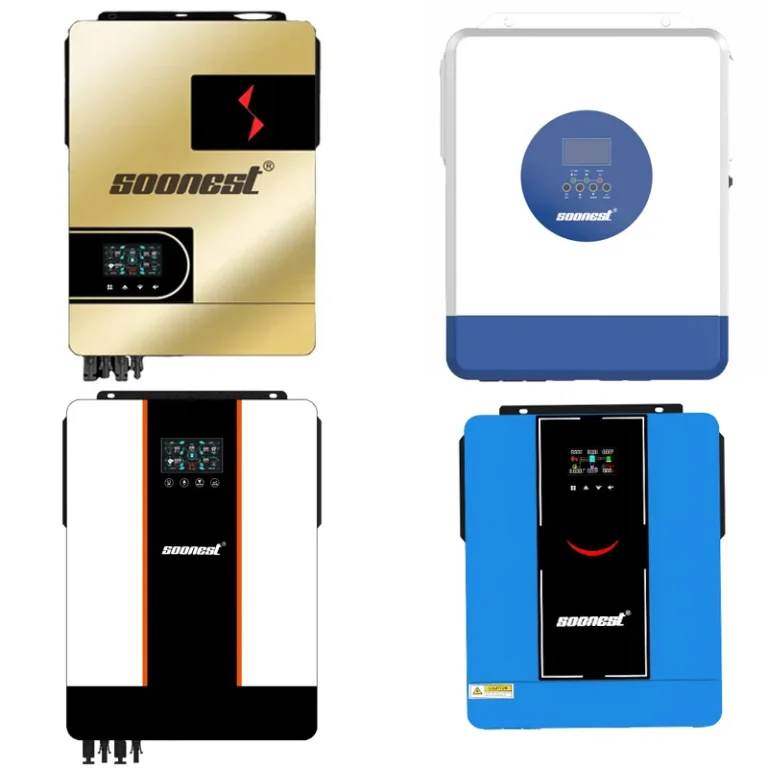El uso de energía solar para ejecutar dispositivos domésticos es un gran problema para las casas de hoy en día. Ahorra dinero en facturas de electricidad y ayuda al planeta. Desde refrigeradores hasta luces, los gadgets listos para la energía solar hacen que su hogar sea más independiente y fuerte. Aquí está una lista de electrodomésticos solaressus beneficios y consejos para usarlos en su hogar para el mejor ahorro y eficiencia.
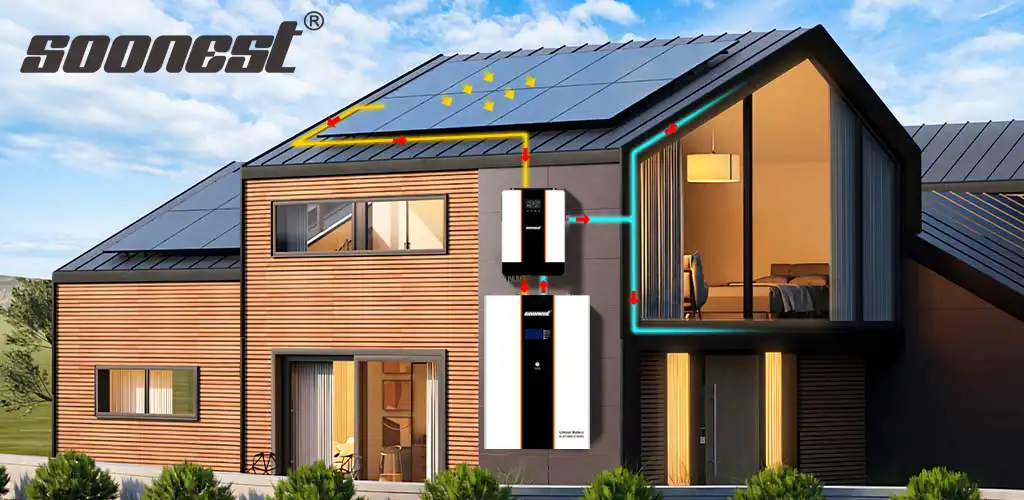
¿Qué hace que los electrodomésticos solares sean una opción inteligente para las casas modernas?
Electrodomésticos a energía solar reducir costos y ayudar al medio ambiente
Los aparatos solares se están volviendo comunes en los hogares. Bajan las facturas de electricidad y reducen el daño a la naturaleza. Al utilizar la luz solar, que es libre y limpia, estos dispositivos evitan los combustibles sucios que cuestan mucho y contaminan. Muchas personas ahora eligen opciones amigables con la energía solar como refrigeradores, aire acondicionado y luces. Estos pueden reducir las facturas de energía hasta en un 100%, dependiendo de cómo las utilices. Reducen la dependencia de la electricidad regular en un 70-100%, en función de la cantidad de energía solar que utilice. Esto los hace amables con el planeta y su billetera con el tiempo.
Cómo estar libre de energía ahorra dinero y crea fuerza
Estar libre de la red eléctrica lo protege del aumento de los costos eléctricos y los apagones. Los expertos dicen que los apagones ocurrirán con más frecuencia en el futuro. Por ejemplo, los cortes de electricidad en Estados Unidos aumentaron un 20% entre 2010 y 2020 debido a condiciones climáticas extremas (FuenteLaboratorio Nacional de Energías Renovables, nrel.gov). El clima caliente reciente ha demostrado que necesitamos mejores maneras de almacenar energía para mantenernos seguros y cómodos. Con herramientas como inversores híbridos y paquetes de baterías, los hogares pueden ahorrar energía solar adicional para la noche o emergencias. Nuestro paquete de batería solar para uso doméstico es increíble. Tiene una gran capacidad de 14,4 kWh, utiliza materiales seguros de litio-hierro-fosfato y funciona con cualquier panel solar.
Por qué los dispositivos listos para la energía solar son clave para las mejoras en el hogar
Más personas se preocupan por la vida verde. Por lo tanto, las empresas hacen dispositivos que funcionan fácilmente con paneles solares. Desde herramientas de cocina hasta sistemas de refrigeración, estar listo para la energía solar es un gran punto de venta. El Pronto El inversor de la serie MY (1-10,2 kW, 220V) convierte la energía solar CC en electricidad de CA suave. Esto hace que sea fácil añadir a su configuración solar actual o futura.
¿Puede la energía solar alimentar sus productos esenciales de cocina?
Cómo funcionan bien los refrigeradores y congeladores con sistemas solares
Una de las mejores opciones en la lista de electrodomésticos solares es el refrigerador. Los frigoríficos modernos alimentados por CC, como el congelador de refrigeración alimentado por energía solar SOONEST (AC / DC 12V / 24V a 220V), utilizan poca energía. No agotan demasiado su batería. Estos mantienen los alimentos fríos mientras usan menos energía, perfectos para hogares fuera de la red o para reducir el uso de electricidad.
El papel de las cocinas, hornos y hervidores de agua solar en la vida diaria
Los hornos de estilo antiguo necesitan mucha energía. Pero los modelos más nuevos listos para la energía solar utilizan la inducción o la energía directa de CC para ahorrar energía. Estos funcionan muy bien con inversores inteligentes que difunden el uso de energía durante las horas soleadas. El inversor de la serie MY más pronto le permite configurarlo para usar energía solar primero cuando cocina o herve agua. Esto impulsa el uso de energía limpia y ahorra electricidad.
Cuándo intercambiar herramientas de cocina antiguas por las listas para la energía solar
Si su hogar utiliza mucho aparatos de cocina hambrientos de energía o enfrenta apagones a menudo, las herramientas listas para la energía solar pueden ayudar. Ahorran dinero y mantienen las cosas funcionando. Compruebe los dispositivos por sus necesidades de energía y cuánto tiempo funcionan. Los artículos de uso diario como los refrigeradores deben venir primero.
¿Es práctico ejecutar sistemas de iluminación doméstica con energía solar?
Cómo las luces LED aumentan la eficiencia solar en su hogar
Las luces LED utilizan hasta un 90% menos de energía que las bombillas antiguas. Son excelentes para los sistemas solares. Sus bajas necesidades de energía le permiten ejecutar más luces por más tiempo con energía almacenada de la batería sin perder brillo. Esto los convierte en la mejor opción para hogares solares.
Las ventajas de agregar sensores de movimiento y controles inteligentes a las luces solares
Las luces inteligentes con sensores de movimiento solo se encenden cuando es necesario. Son perfectos para pasillos, patios o armarios. Esto reduce el desperdicio de energía de la batería. Además, los controles inteligentes pueden ajustar las luces para encender o apagar en función del amanecer, la puesta del sol o cuando la gente está cerca. Esto ahorra aún más energía y agrega seguridad.
Por qué la iluminación exterior es a menudo el primer paso para una casa alimentada por energía solar
Las luces al aire libre son un comienzo fácil para los electrodomésticos solares. Son baratos y sencillos. Las unidades con paneles solares incorporados no necesitan cableado complicado, son excelentes para jardines, senderos o entradas. Las bombas de energía solar utilizadas en parques o fuentes de la ciudad también pueden funcionar para patios domésticos.
¿Qué tan bien manejan los electrodomésticos solares las tareas de lavandería y limpieza?
¿Se puede utilizar energía solar para lavadoras y secadoras?
Las nuevas arandelas de carga frontal utilizan menos agua y energía que las antiguas de carga superior. Cuando se emparejan con inversores híbridos inteligentes como la serie MY más pronto, que tiene carga solar MPPT (hasta 80A) y un amplio rango de entrada fotovoltaica (30-400VDC), funcionan bien durante las horas soleadas. Pueden utilizar energía solar en vivo o almacenada. Los secadores necesitan más energía, pero pueden funcionar durante el sol del mediodía si tiene suficiente almacenamiento de batería.
Qué saber sobre el uso de energía durante la lavandería
Las lavadoras tienen diferentes ciclos. Los modos de solo giro usan poca potencia, tal vez 500 vatios. Los ciclos de agua caliente necesitan mucho más, más de 2.000 vatios. Lavar la ropa cuando el sol es fuerte mantiene su batería llena para uso nocturno. Esto hace que tus aparatos funcionen mejor.
Consejos para hacer tareas durante las horas de pico de luz solar
Ejecute las lavadoras y secadoras de 10 a.m. a 2 p.m. cuando los paneles solares obtengan la mayor energía. Esto evita drenar las baterías. Muchas máquinas modernas tienen botones de inicio retardado. Establezca que comience cuando el sol esté en su mejor momento. Utilice enchufes inteligentes para rastrear el uso de energía y planificar mejor.
¿Son los dispositivos de entretenimiento compatibles con los sistemas solares?
La sorprendente eficiencia de los televisores, altavoces y enrutadores con energía solar
Los dispositivos divertidos como los televisores LED, los altavoces Bluetooth y los enrutadores Wi-Fi utilizan menos de 200 vatios en total. Esto los hace excelentes para los sistemas solares. Funcionan bien todos los días con instalaciones fotovoltaicas. Cada dispositivo se prueba durante al menos dos horas antes del envío para asegurarse de que maneja cambios de energía fuera de la red.
Manejo del drenaje de energía en espera de dispositivos multimedia con inversores inteligentes
Los gadgets dejados conectados pueden tomar energía incluso cuando están apagados. Esto se llama una carga “fantasma”. Los inversores inteligentes, como la serie MY más pronto, detienen esto cortando la energía cuando los dispositivos no están en uso. También se reinician automáticamente después de cortos apagones, manteniendo las cosas sin problemas sin levantar un dedo.
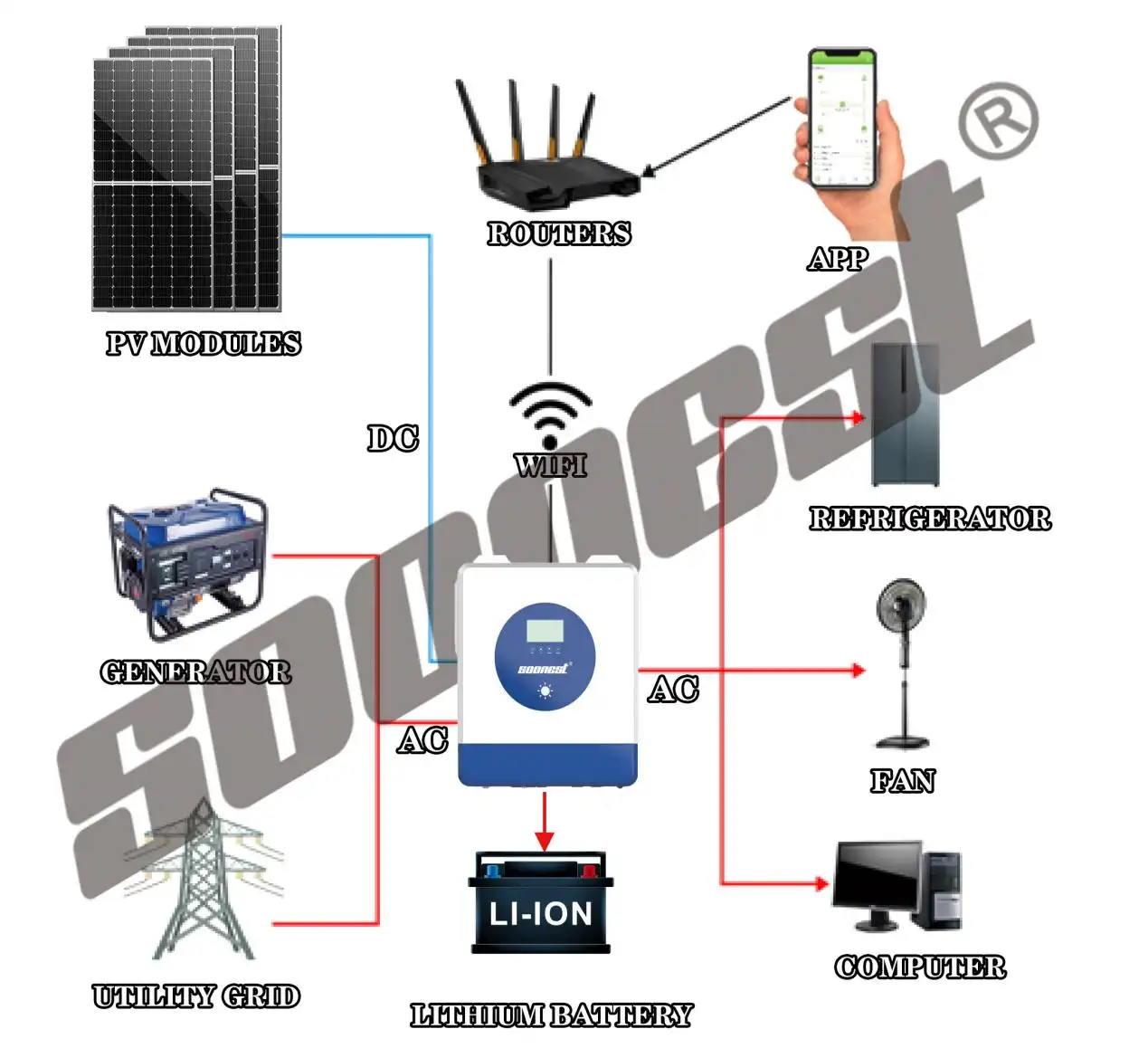
¿Puede confiar en la energía solar para necesidades de energía de emergencia o al aire libre?
Por qué las centrales eléctricas portátiles son clave para las necesidades fuera de la red o de respaldo
Los sistemas de inversores portátiles le dan energía durante apagones o desastres naturales. No necesitan generadores de gas. Son ligeros pero lo suficientemente fuertes como para ejecutar teléfonos, luces, computadoras portátiles o incluso pequeños dispositivos médicos durante horas. Son excelentes para emergencias o diversión al aire libre.
La facilidad de cargar dispositivos móviles con paneles solares durante apagones
Los paneles solares plegables con puertos USB le permiten cargar teléfonos en cualquier lugar donde brille el sol. Esto es perfecto para apagones, acampar o trabajar lejos de una red eléctrica. Son fáciles de llevar y configurar.
¿Con qué aparato debe empezar al cambiar a la energía solar?
Factores que guían su elección: con qué frecuencia lo usa, necesidades de energía y presupuesto
Comience con dispositivos que usa mucho que no necesitan mucha energía, como luces LED (10-20 vatios) o neveras (1-1,5 kWh/día). Estos ahorran dinero rápidamente. Combine sus necesidades de energía con la salida de su sistema solar, como una configuración de 4 kW para una pequeña casa. Planifica gastar entre $1,000 y $3,000 en paneles y baterías para comenzar.
Construir un plan paso a paso para cambiar toda su casa a la energía solar
- Paso 1Obtener luces solares al aire libre y centrales eléctricas portátiles. Son baratos y fáciles de empezar.
- Paso 2Agregar una nevera solar y luces LED para interiores. Utiliza un sistema solar de 2-4 kWh y una batería de 5-10 kWh.
- Paso 3Incluye electrodomésticos grandes como lavadoras o aire acondicionado. Obtenga un sistema de 6-10 kW con una batería de 14,4 kWh. Utilice un inversor híbrido como la serie MY más pronto para actualizaciones fáciles. Este plan reparte los costos. Ahorrará en facturas y puede obtener descuentos fiscales, pagando en 5-7 años.
Preguntas frecuentes
Q1: ¿Qué tamaño de sistema solar alimenta un refrigerador?
R: Un refrigerador solar típico (1-1,5 kWh/día) necesita un sistema solar de 4-6 kWh con una batería de 5-10 kWh. Esto lo mantiene funcionando todo el día y la noche.
P2: ¿Funcionan los electrodomésticos solares en días nublados o por la noche?
R: Sí. Con una batería grande, como 14,4 kWh, y un inversor híbrido, funcionan con energía almacenada. Esto los mantiene trabajando sin importar el tiempo o la hora.
Q3: ¿Son los electrodomésticos solares más caros que los normales?
R: Sí, al principio. Costan un 10-20% más debido a diseños especiales, como el soporte de alimentación CC. Pero ahorran mucho al reducir las facturas de energía hasta un 100%.

